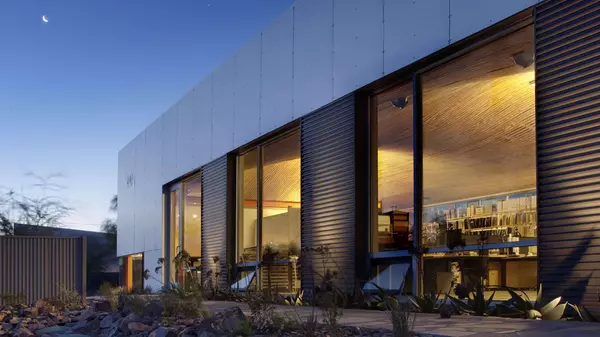Seaport San Diego developer asks state lawmakers to expedite environmental review process
A bill making its way through the state Legislature seeks to push the mega Seaport San Diego project through the state-mandated environmental review process at a faster clip and would limit the California Coastal Commission’s ability to deny the project.
Wednesday, the state Senate’s Environmental Quality Committee voted 8-0 to advance SB 675 to the Senate Rules Committee. The vote represents an initial win for a bill that still has a long road ahead through the state Senate and Assembly.
Authored by state Sen. Steve Padilla, D-Chula Vista, SB 675, as recently amended, is singularly focused on the Seaport San Diego project, which promises to remake Seaport Village and surrounding areas into a world-class destination with a marquee, 500-foot observation tower.
The bill seeks to remove some of the potential log jams facing developer 1HWY1 as it navigates the environmental review process required by the California Environmental Quality Act.
Specifically, the bill would require the Coastal Commission to provide feedback within 60 days on materials submitted during the preparation of the project’s environmental impact report, would tighten the agency’s approval window to a strict, 180-day period after certification of the environmental impact report, and would prevent the agency from imposing conditions that could render the project infeasible.
“Seaport Village is an iconic but aging waterfront destination in San Diego, and revitalization is urgently needed to better serve the community and support modern infrastructure,” Padilla, a member of the Environmental Quality Committee and a former coastal commissioner, told fellow committee members. “Large, multi-agency projects like Seaport often face years of delay due to multiple discretionary approvals processes that run sequentially to one another. … SB 675 ensures responsible agencies act within 180 days, preventing bottlenecks after EIR certification. Early coordination among agencies, as required by this bill, promotes transparency, reduces duplicity and gives applicants the clarity and predictability that they’re entitled to.”
Backed in part by San Diego’s well-known Jacobs family, Seaport San Diego envisions a complete remake of downtown’s Central Embarcadero, a Port of San Diego subdistrict that includes Seaport Village and follows the downtown waterfront from Embarcadero Marina Park North to the G Street Mole, just south of the USS Midway Museum.
In November 2016, the port selected the entity now known as 1HWY1 to redevelop the expansive area following a competitive bidding process. 1HWY1 is headed by Yehudi “Gaf” Gaffen, Jeff “JJ” Jacobs (son of Irwin Jacobs) and Jeff Essakow.

In September 2023, the port initiated its environmental review of the $3.8 billion Seaport San Diego project. The project description included in the notice of preparation identifies 2.7 million square feet of mixed-use development, including 2,050 hotel rooms spread across seven properties, 215,000 square feet of retail and restaurant space, 220,067 square feet of office space for ocean research, 159 boat slips, 16 acres of parks and open space, and 2,250 parking spaces.
A draft of the environmental document is expected to be released for agency and public review in the fall. The final version of the report will go to the Board of Port Commissioners for certification.
Although the port is the primary permitting agency for the Seaport San Diego project, the Coastal Commission, which is considered a responsible agency under CEQA, will have the final say. That’s in part because the development requires an amendment to the Port Master Plan. Per the terms of its exclusive negotiating agreement with the port, 1HWY1 has until Oct. 1, 2027, to secure government approvals.
There are timelines around agency approvals in the existing environmental law, but they can hinge on whether a project application is deemed complete, leaving the door open for extended periods of time.
The potentially protracted time between port approval and Coastal Commission approval is of especial concern to Gaffen, whose team has so far spent north of $20 million on pre-development costs.
“The genesis of this bill was talking to multiple legislators to share some of the concerns and the issues we were having (about) the uncertainty of the timing and process for getting the permits to break ground,” Gaffen told the Union-Tribune. “That uncertainty is just a death knell for any big project. … All we’re asking for is fair and timely review.”
SB 675 seeks to provide more certainty by requiring agency feedback on project materials earlier in the process and removing the law’s current provision that the application must be deemed complete before the 180-day, approval clock officially starts.
The bill, as originally written, would have applied to all Environmental Leadership Development Projects, or ELDPs, facing discretionary approvals from multiple agencies. An ELDP is a special, state designation for a project that meets high environmental and labor standards, and is already eligible for expedited judicial review. The bill language is in the process of being narrowed to only apply to the Seaport San Diego project at the request of the committee to avoid potential unanticipated consequences, Gaffen said.
The Coastal Commission has not yet taken an official position on the bill.
However, the agency’s Legislative Director Sarah Christie submitted a letter of concern to the Senate Environmental Quality Committee, which is chaired by state Sen. Catherine Blakespear, D-Encinitas. The letter states that the commission does not outright object to the bill’s proposed review timelines, but notes that incomplete submittals are a frequent obstacle to timely reviews. As such, the 180-day window should be conditioned on a complete application, Christie wrote.
The commission’s greatest concern is bill language that would limit the agency’s ability to deny the project or condition approval.
“The commission’s most significant concern with SB 675 is the extent to which this bill would potentially constrain the commission’s ability to ensure project compliance with the Coastal Act,” the letter states. “The CEQA process has never been considered a substitute for Coastal Act review and analysis. Coastal Act issues such as public access, coastal hazards, lower-cost overnight accommodations and lower-cost, visitor-serving opportunities are specific and unique to the Coastal Act and assumed to be fully or adequately addressed during the Commission’s review, not in the final environmental document.”
In the past, Coastal Commission staff have objected to the height of Seaport San Diego’s observation tower and other proposed skyscrapers, and have raised concerns about land uses that may be inconsistent with the Public Trust Doctrine.
In addition to the commission’s letter of concern, the Senate Environmental Quality Committee received three letters opposing SB 675 unless amended, and one opposition letter from the Environmental Center of San Diego.
“While incentivizing developers to design their projects with labor standards and basic sustainability principles in mind is laudable, exempting those projects from basic statewide environmental regulatory requirements goes too far,” Pamela Heatherington, who is on the board of directors for the Environmental Center, wrote in the nonprofit’s letter.
The bill also received 11 letters of support from local labor unions and business associations, including the Downtown San Diego Partnership, the San Diego Building and Construction Trades Council and the San Diego Regional Chamber of Commerce. The city of San Diego also submitted a letter of support.
“Seaport San Diego is a transformative development project that will bring quality jobs and business opportunities to our region, while also providing important tourism benefits,” Downtown Partnership CEO Betsy Brennan wrote in the organization’s letter to the committee. “SB 675 would help bring this exciting project, currently pursuing certification as an ELDP, to fruition sooner, delivering economic and quality of life benefits and making San Diego a better place to live, work and play.”
The Port of San Diego has not taken a position on the bill.
“With the proposed Seaport San Diego project currently in the environmental review phase, it would be inappropriate for the port to take a position on SB 675 at this time,” port spokesperson Brianne Page said.
Categories
Recent Posts










GET MORE INFORMATION

Agent | License ID: 02118739

